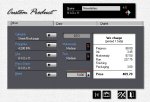Hi,
I'm working in a mid-sized sheetfed printshop. We run in 3 shifts constantly, but still trying to reach the full potential in press and postpress with our employees. Every part of the production process has quota, but sometimes, for example, it's hard to norm the handwork in postpress with numbers (hours); especially in advance, and with so many job diversification. In press, we make it rather precisely (on of the input parameters is the avarage speed of 8000 sheets/hour for 4/0 jobs), but in postpress the truble starts.
So i'm interested in how does it work at your place? Do you have efficient way of valuation and estimation for each separate production process (in press and postpress) and for each employee in charge of certain process (folding, binding, packaging, etc.)?
I'm working in a mid-sized sheetfed printshop. We run in 3 shifts constantly, but still trying to reach the full potential in press and postpress with our employees. Every part of the production process has quota, but sometimes, for example, it's hard to norm the handwork in postpress with numbers (hours); especially in advance, and with so many job diversification. In press, we make it rather precisely (on of the input parameters is the avarage speed of 8000 sheets/hour for 4/0 jobs), but in postpress the truble starts.
So i'm interested in how does it work at your place? Do you have efficient way of valuation and estimation for each separate production process (in press and postpress) and for each employee in charge of certain process (folding, binding, packaging, etc.)?










